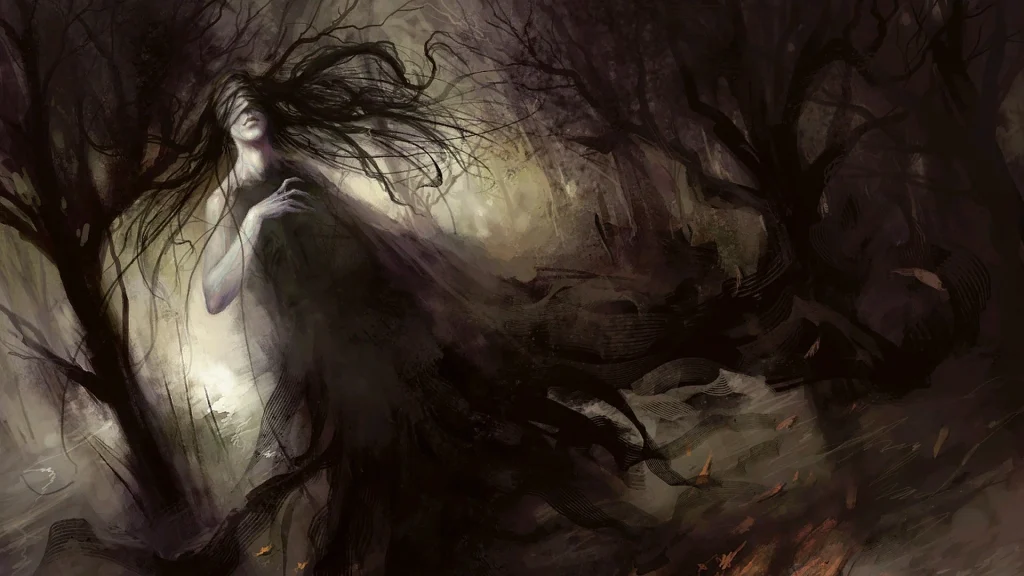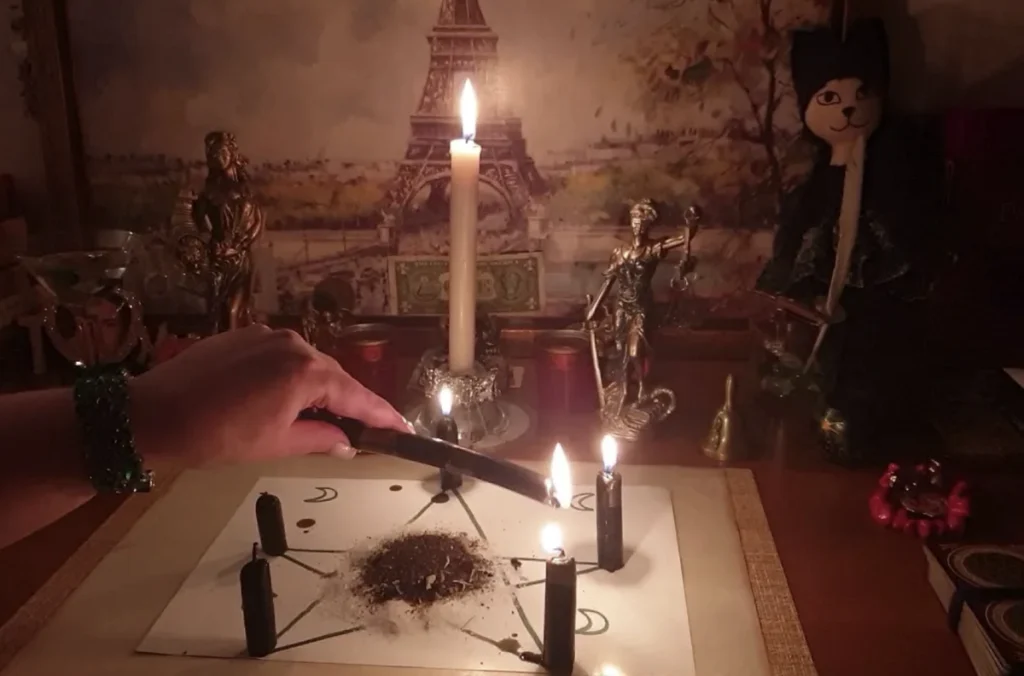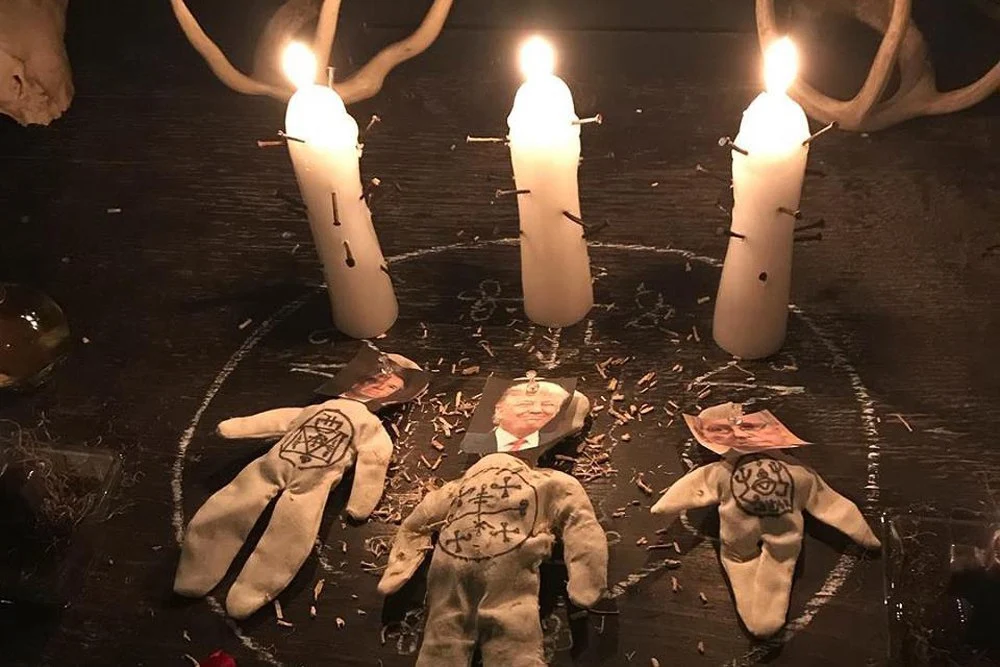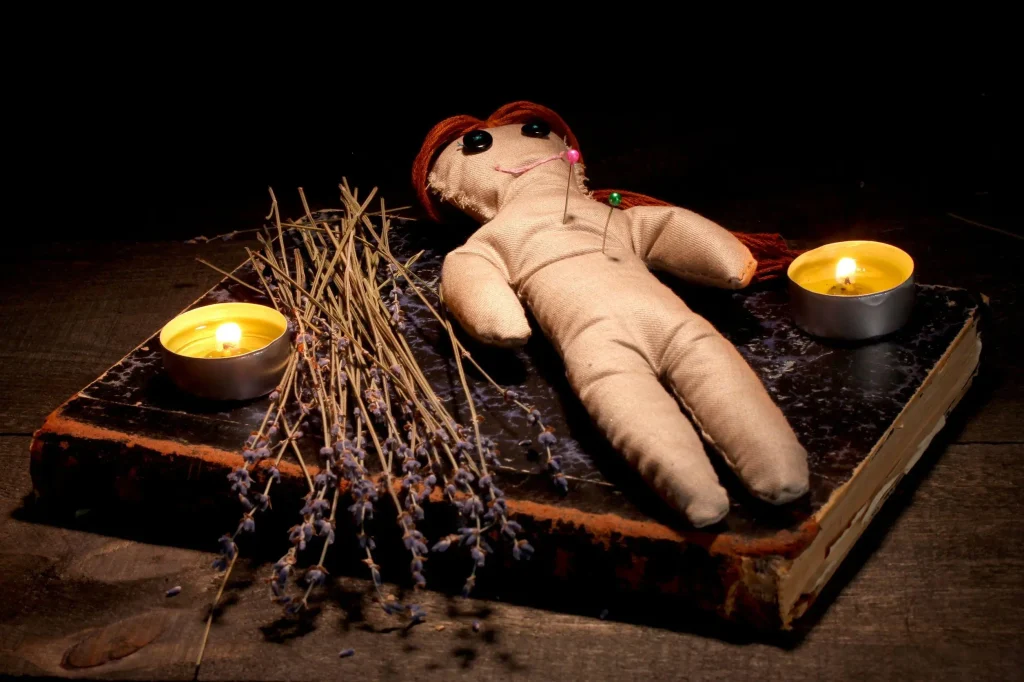Curses have been woven into the fabric of folklore, superstition, and witchcraft for millennia. They represent the darker side of magical practices, often deployed to bring about misfortune, ill luck, or even catastrophe upon the unwary target. Embrace caution as we embark on an elucidating journey through a list of curses well-known within the world of witchcraft and beyond. From ancient incantations to modern hexes, understanding these curses is a venture not for the faint-hearted but for the curious and brave.
List of Curses
- Curses are malevolent spells cast to cause harm, misfortune, or tragedy.
- They vary in complexity, from simple bad luck charms to intricate rituals invoking potent forces.
- Understanding the different curses can offer insight into the cultural history of magic and witchcraft.
- Protection against curses is a common theme in magical belief systems.
- Knowledge of how curses work can empower individuals to avoid or counteract them.
The Curse of the Evil Eye
One of the most ubiquitous curses known to humanity, the Evil Eye, is believed to be cast by a malevolent glare, often motivated by envy or dislike. Cultures worldwide have devised amulets and rituals to protect against this ancient hex:
- The Hamsa: A palm-shaped amulet originating from the Middle East.
- The Blue Eye: A charm commonly found in Greece and Turkey.


The Voodoo Doll: A Tool of Sympathetic Magic
Voodoo dolls are often associated with curses in the practice of Voodoo, though their actual use is far more nuanced. Pins inserted into the doll are believed to transfer affliction to the person it represents.
- Origin: West African Vodun practice.
- Misconceptions: Pop culture often exaggerates the negative use of voodoo dolls.
The Hex: A Folkloric Curse of Malintent
A hex is a spell cast for ill will, often found in Germanic folklore. It can range from causing minor inconvenience to invoking serious harm.
- Hex Signs: Painted symbols on barns in Pennsylvania Dutch Country intended to ward off hexes.
The Mummy’s Curse: An Archeological Anomaly
Said to befall those who disturb ancient tombs, the Mummy’s Curse captures our imagination with tales of explorers meeting untimely ends after desecrating Egyptian resting places.
- Famous Case: The death of Lord Carnarvon, a financial backer of the expedition that discovered Tutankhamun’s tomb.
The Generational Curse: Family Misfortune
Believed to affect families across generations, these curses are seen as a punishment or consequence passed down from ancestors who committed grave misdeeds.
- Breaking the Curse: Rituals and spiritual guidance are often sought to lift these burdensome legacies.
Shakespeare’s Curse: The Scottish Play
Actors dare not speak the name of Shakespeare’s “Macbeth” in a theater, for fear of invoking a curse that brings misfortune and chaos to their production.
- Substitutes: The euphemism “The Scottish Play” is used instead.


The Binding Curse: Restricting One’s Potential
A more subtle form of cursing, binding, is designed to prevent a person from achieving success or happiness.
- Common Symbols: Knots or objects symbolizing restraint.
Curse Tablets: Ancient Written Spells
Dating back to the Greco-Roman world, these lead tablets were inscribed with curses aimed at adversaries, often entailing ill health or death.
- Discovery Sites: Many have been found in ancient graves or sacred wells.
Sports Curses: The Bane of Teams and Fans
A whimsical yet earnest belief among sports enthusiasts that their team is suffering prolonged misfortune due to a curse.
- The Curse of the Bambino: The Boston Red Sox’s 86-year World Series drought attributed to trading Babe Ruth to the Yankees.
Protection and Countercurses
Just as there are curses, there are also protective measures and spells designed to counteract or prevent their effects:
- Talismans: Objects imbued with protective powers.
- Warding Rituals: Ceremonies to shield against curses.
- Reversal Spells: Incantations to return a curse to its sender.
More about the list of curses
What is the difference between a hex and a curse?
A hex is a type of curse, typically of folkloric origin, while “curse” is the broader term encompassing any malevolent magical act aimed at causing misfortune or harm.
The terms “hex” and “curse” are often used interchangeably, but they can have slightly different connotations depending on cultural and individual interpretations. In general, both words refer to the act of casting a spell with harmful intent. However, there are subtle distinctions:
Hex:
A hex is often considered a type of spell or charm with negative effects, but it may not necessarily be as severe or malevolent as a curse. In some cultural and magical traditions, a hex may be seen as a form of sympathetic magic, where the spell is cast to bring about misfortune or negative energy upon a specific person or situation.
Hexes are sometimes associated with folk magic and traditions, and they may be perceived as less potent or enduring than curses.
Curse:
A curse is generally regarded as a more powerful and serious form of magical harm. It is often seen as a deliberate invocation of supernatural forces to bring harm, suffering, or misfortune to the target.
Curses are commonly portrayed in folklore, mythology, and various magical traditions as having a longer-lasting and more profound impact on the individual or community that is targeted. Curses may involve rituals, incantations, and the use of specific magical objects or symbols to amplify their effects.
How can one protect themselves from a curse?
Protection can be sought through amulets, talismans, warding rituals, and sometimes even simple belief in the power of positive thought. Engaging in protective practices from one’s own cultural or spiritual traditions is common.
Remember that these suggestions are general and may not resonate with everyone. The effectiveness of protective measures can be influenced by personal beliefs and cultural contexts. If you are experiencing significant distress, it’s advisable to consult with mental health professionals who can provide support and guidance.
Are curses real or merely superstition?
While curses may not have a basis in scientific reality, it’s essential to approach these beliefs with sensitivity and respect for cultural diversity. People’s beliefs are shaped by their cultural backgrounds, personal experiences, and religious or spiritual convictions. As a result, the question of whether curses are “real” may have different answers depending on one’s perspective.
If someone is distressed or feels negatively affected by perceived curses, it may be helpful to address these concerns through culturally sensitive counseling, psychological support, or consultation with trusted spiritual or religious advisors. Balancing cultural understanding with critical thinking can be important in navigating these complex and personal belief systems.
Is there a “most powerful” curse?
Throughout history and across cultures, some curses have gained notoriety due to their association with significant historical events, legends, or myths. However, it’s crucial to emphasize that these stories are often rooted in cultural narratives rather than objective evidence of supernatural power.
Here are a few examples of curses that have been historically discussed:
- The Curse of the Pharaohs:
- The Curse of the Hope Diamond:
- The Curse of Macbeth:


Can a curse be broken?
The concept of breaking curses is often addressed through various rituals and practices found in different traditions and spiritual systems. some individuals engage in symbolic and ritualistic actions to counter perceived negative energy. Here are some common methods for breaking curses:
- Cleansing Rituals:
- Many traditions involve cleansing rituals to remove what is perceived as negative energy. This may include practices such as smudging with sage, taking ritual baths with salt or herbs, or using other purification methods.
- Protection Talismans:
- Wearing or carrying protective talismans or amulets is a common practice thought to act as a safeguard against negative energy.
- Prayer and Invocations:
- People may use religious or spiritual prayers and invocations to seek divine assistance and protection in breaking what they perceive as negative influences.
- Seeking Assistance from Spiritual Practitioners:
- Individuals may consult spiritual practitioners, such as healers, shamans, or priests, who use their knowledge of spiritual traditions to perform rituals aimed at breaking perceived negative energy.
- Energy Healing:
- Practices like energy healing, Reiki, or other alternative therapies may be employed to balance and cleanse an individual’s energy fields.
- Personal Empowerment:
- Strengthening one’s mental and emotional resilience is considered an essential aspect of addressing perceived negative influences. This might involve cultivating a positive mindset and addressing underlying psychological distress.
Understanding the vast array of curses embedded within the world’s cultural and mystical history provides not only a glimpse into human superstition and fear but also a fascinating look at how we seek to protect ourselves from unseen forces. Whether one believes in their tangible effects or considers them artifacts of folklore, curses remain a captivating topic that continues to enchant and mystify.


Это сообщение просто бесподобно 😉